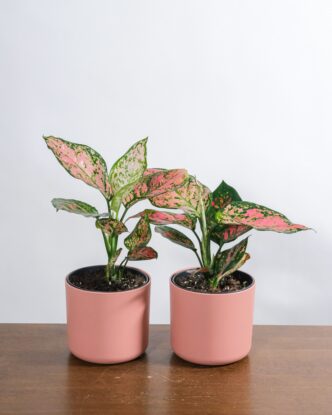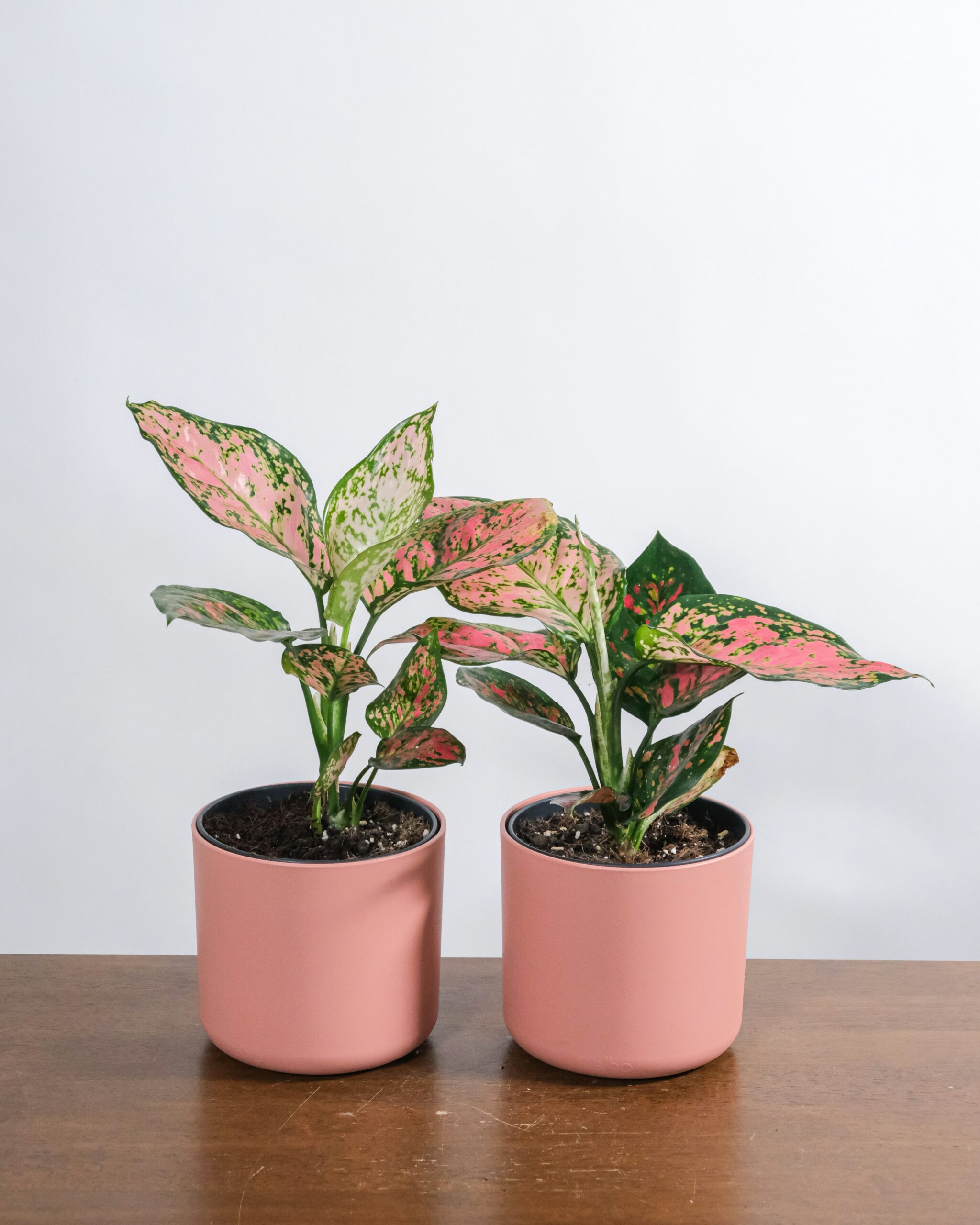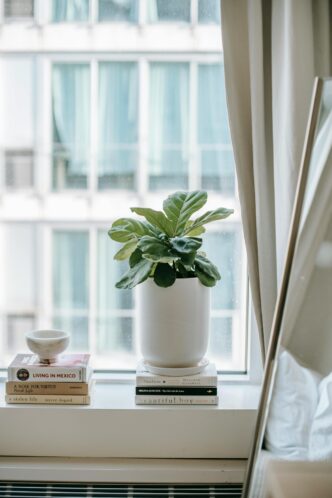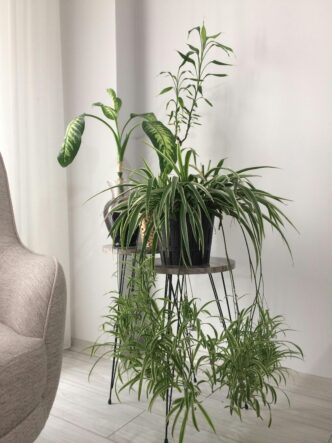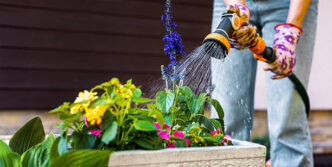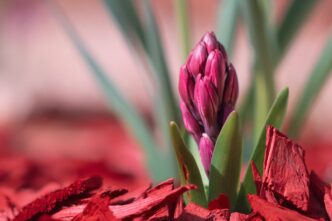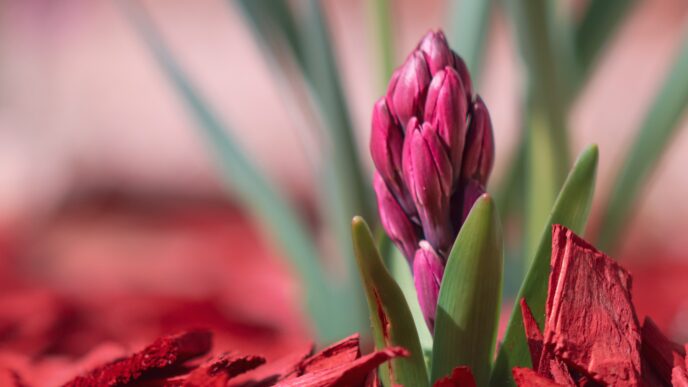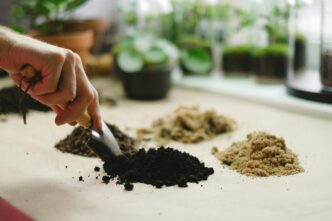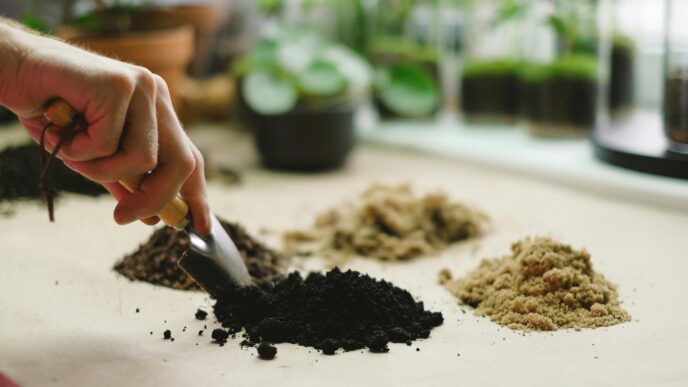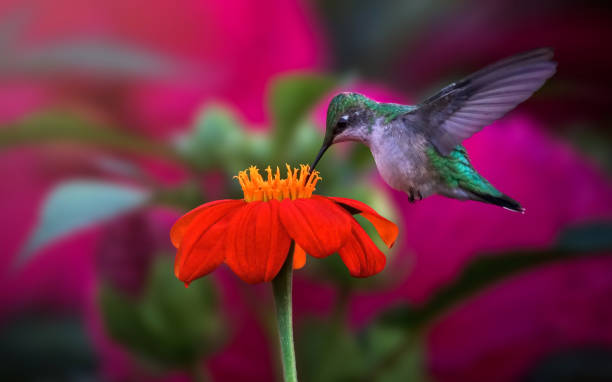Aglaonema, commonly known as Chinese Evergreen, is a popular ornamental plant admired for its vibrant foliage and easy maintenance. This plant typically features lush, glossy, lance-shaped leaves that come in a wide variety of patterns and colors, ranging from deep green to silver, red, pink, and cream, depending on the variety. Aglaonema grows in a compact, bushy form and usually reaches a height of 1 to 3 feet, making it ideal for desks, tabletops, or floor displays. It produces small, inconspicuous flowers on a spadix, but the foliage remains its primary attraction.
Aglaonema thrives in low to moderate light conditions and prefers warm, humid environments. It requires well-draining soil and moderate watering—allowing the topsoil to dry between watering helps prevent root rot. Known for its air-purifying qualities, Aglaonema is also tolerant of occasional neglect, making it a favorite among beginner gardeners and those seeking low maintenance houseplant.

Physical Description of aglaonema Plant
The Aglaonema plant is a striking tropical perennial known for its lush, ornamental foliage. It typically grows in a compact, bushy shape with thick, upright stems and an overall height ranging from 1 to 3 feet. Its most distinctive feature is the large, lance-shaped leaves that are often leathery and glossy in texture. These leaves can vary in color and pattern depending on the variety, with shades including dark green, silver, cream, red, and pink.
The flowers of the Aglaonema plant are small and subtle, typically shaped like a spathe and spadix, similar to those of peace lilies. The spathe is a pale green, cream, or white leaf-like bract that surrounds the central spadix, which is usually yellow or light green. While not particularly showy, the flowers add a delicate touch, though the plant is mainly grown for its attractive foliage.
Light Requirement of aglaonema plant
Aglaonema thrives in low to moderate indirect light, making it ideal for indoor spaces. While it can tolerate low-light environments, brighter indirect light helps enhance the vibrancy of its foliage. Avoid direct sunlight, as it can scorch the leave.
Temperature and Humidity
This tropical plant prefers warm temperatures ranging from 65°F to 80°F (18°C to 27°C). It should be kept away from cold drafts and sudden temperature changes. Aglaonema also enjoys moderate to high humidity, so occasional misting or using a humidity tray can be beneficial, especially in dry indoor condition.
Water Requirement
Aglaonema requires moderate watering. Allow the top 1–2 inches of soil to dry out between waterings. Overwatering can lead to root rot, while underwatering may cause the leaves to wilt or brown. Reduce watering during cooler months.
Soil Requirement
Use a well-draining potting mix that retains some moisture but does not stay soggy. A mix of potting soil, perlite, and peat moss or coco coir works well. Good drainage is essential to prevent waterlogging.
Fertilization of Aglaonema plant
Feed Aglaonema with a balanced, water-soluble fertilizer every 4–6 weeks during the growing season (spring and summer). Fertilizing can be reduced or stopped during the fall and winter months when growth slows down.
Pruning and Maintenance
Aglaonema is a low-maintenance plant. Prune yellow or damaged leaves to encourage new growth and maintain its appearance. Wipe the leaves occasionally to remove dust and improve photosynthesis.

Propagation of Aglaonema (Chinese Evergreen)
Aglaonema, commonly known as Chinese Evergreen, is a popular indoor plant admired for its attractive foliage and low maintenance requirements. Propagating Aglaonema is a simple and effective way to multiply your collection or rejuvenate older plants. The most common methods of propagation include stem cuttings, division, and sometimes tissue culture (in commercial settings), but stem cuttings and division are best suited for home gardeners.
Propagation by Stem Cuttings
This method involves cutting a healthy stem from the mother plant and encouraging it to root in either water or soil. Choose a mature stem with at least one or two nodes (where the leaves or roots grow). Cut the stem just below a node using a sterilized knife or scissors. Place the cutting in water or moist, well-draining soil. If using water, change it every few days to prevent rot. Roots typically begin to form within 2–4 weeks. Once a good root system develops, transplant the cutting into a pot with regular potting.
Propagation by Division
Division is best performed when repotting a mature Aglaonema. Gently remove the plant from its pot and shake off excess soil. Look for natural separations or clumps of stems and roots that can be carefully pulled or cut apart. Ensure that each division has at least a few healthy roots and stems. Plant each new section in its own pot with fresh soil and water thoroughly. This method provides instant new plants and is less stressful for the plant compared to cuttings.
Care After Propagation
After propagation, place the new plants in a warm, humid environment with bright, indirect light. Avoid direct sunlight, which can scorch the leaves. Keep the soil lightly moist but not soggy. Within a few weeks, the new plants should begin to establish themselves and grow new foliage.
Types of Aglaonema (Chinese Evergreen)
Aglaonema is a diverse genus of ornamental plants known for their striking foliage, making them favorites for indoor decoration. With numerous hybrids and cultivars, Aglaonema plants vary widely in leaf color, size, and pattern. Below are some popular types of Aglaonema, each with its own unique charm:
- Aglaonema ‘Silver Bay’
This is one of the most common and widely grown varieties. It features large, lance-shaped leaves with silvery centers and dark green edges. ‘Silver Bay’ is appreciated for its tolerance t low light and is a hardy choice for beginners. - Aglaonema ‘Red Siam’ (Siam Aurora)
Known for its vibrant red and pink-hued leaves bordered with green, this variety adds a bold splash of color to any space. ‘Red Siam’ prefers brighter indirect light to maintain its vivid coloration and is often chosen for decorative purposes. - Aglaonema ‘Maria’
This compact variety has dark green leaves with lighter green patterns, making it ideal for tabletops or small spaces. ‘Maria’ is particularly popular due to its excellent adaptability to low-light environments. - Aglaonema ‘Snow White’
Named for its highly variegated white and green leaves, ‘Snow White’ brings a fresh, elegant look to interiors. It thrives in medium to bright indirect light and requires moderate watering. - Aglaonema ‘Cutlass’
This cultivar features long, narrow, silver-green leaves with dark green edges. Its graceful, blade-like foliage gives it a unique appearance compared to other Aglaonemas. ‘Cutlass’ is a great choice for adding a soft, flowing texture to plant arrangements. - Aglaonema ‘Pink Dalmatian’
A more exotic variety, ‘Pink Dalmatian’ displays speckled pink spots over deep green leaves, creating a dramatic and eye-catching effect. It prefers moderate light and occasional watering.
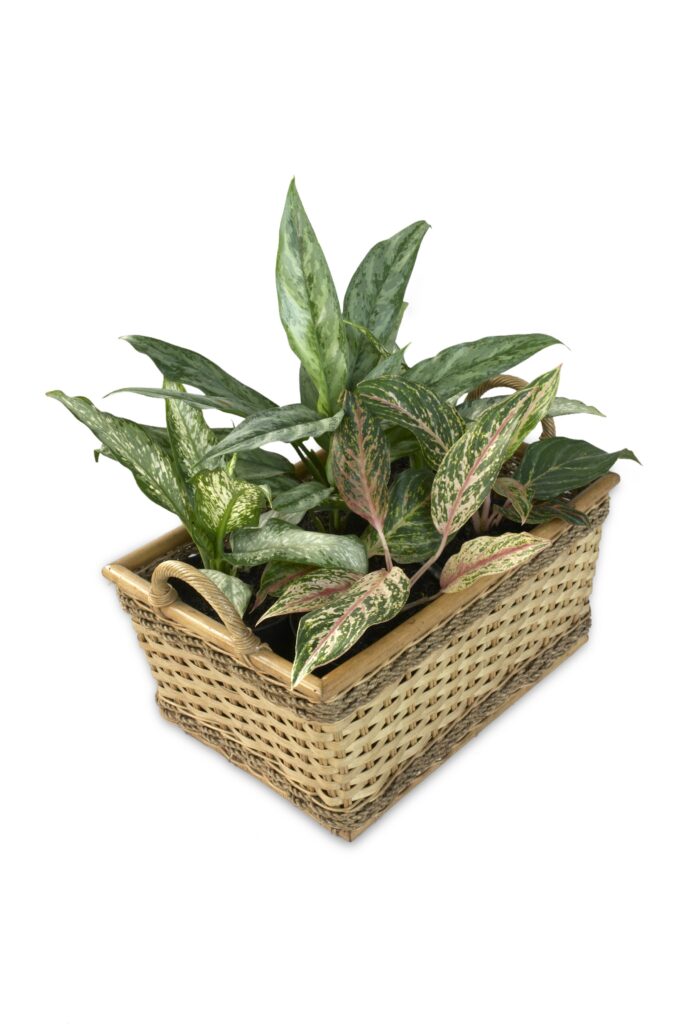
Common Pests and Plant Diseases
Common Pests
Aphids
These tiny pests thrive in dry conditions and appear as fine webbing on the undersides of leaves. They suck plant sap, leading to yellowing and speckled leaves.
Solution: Increase humidity, wipe leaves with a damp cloth, and use insecticidal soap or neem oil if infestation is severe.
Mealybugs
Mealybugs look like small white cottony clumps on stems and leaf joints. They feed on sap and excrete sticky honeydew, which can lead to mold growth.
Solution: Remove with alcohol-dipped cotton swabs, or spray with neem oil or insecticidal soap.
Diseases
Root Root
Caused by overwatering and poor drainage, root rot leads to mushy, black roots and yellowing or wilting leaves.
Solution: Remove affected roots, repot in fresh, well-draining soil, and adjust watering habits.
Leaf Spot
Fungal or bacterial spots may appear as brown or black marks on the leaves. High humidity and poor air circulation can promote this.Solution: Remove affected leaves, improve airflow, and avoid overhead watering. Fungicide may be used if the problem persists.
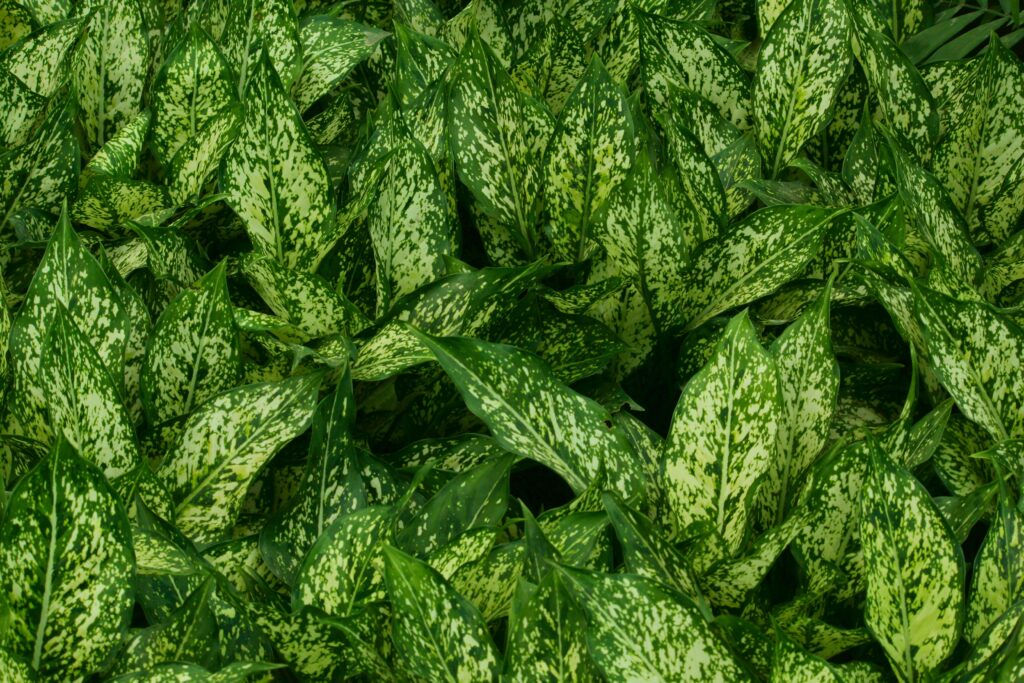
Common Problems With Aglaonema
- Yellowing Leaves
One of the most frequent issues with Aglaonema is yellowing leaves. This is often a sign of overwatering, which leads to waterlogged soil and root rot. It can also result from poor drainage or cold drafts. If only the lower leaves are yellowing, it may just be natural aging. Ensure the soil dries out slightly between waterings and that the plant is kept in a warm, draft-free spot.
- Brown Leaf Tips or Edges
Brown tips or edges on leaves typically indicate low humidity, underwatering, or salt build-up from fertilizer. Aglaonema enjoys moderate to high humidity, so dry indoor air can cause stress. Try misting the plant, using a humidity tray, or placing it near a humidifier. Flush the soil occasionally to remove excess fertilizer salts.
- Drooping or Wilting Leaves
If your Aglaonema looks limp or droopy, it’s usually due to underwatering or, conversely, overwatering. Check the soil moisture: if it’s dry, give the plant a thorough watering; if it’s soggy, let it dry out and adjust your watering schedule. Also, inspect for root rot if the drooping persists.
Uses of Aglaonema
Ornamental Uses of Aglaonema
Aglaonema, also known as Chinese Evergreen, is a highly popular ornamental plant admired for its striking foliage, which features a variety of colors and patterns including green, silver, red, and pink. Its lush and decorative leaves make it a standout addition to any interior space. One of its greatest advantages is its adaptability to low light, making it especially suitable for indoor environments such as homes, offices, malls, hotels, and restaurants.
In residential settings, Aglaonema is often used as a decorative houseplant placed on tabletops, shelves, or as a floor plant in living rooms, bedrooms, and entryways. Its compact growth habit and colorful appearance allow it to complement both modern and traditional interiors. In office spaces, it is frequently used to add greenery to workstations, conference rooms, and reception areas, contributing to a calming and welcoming atmosphere.

